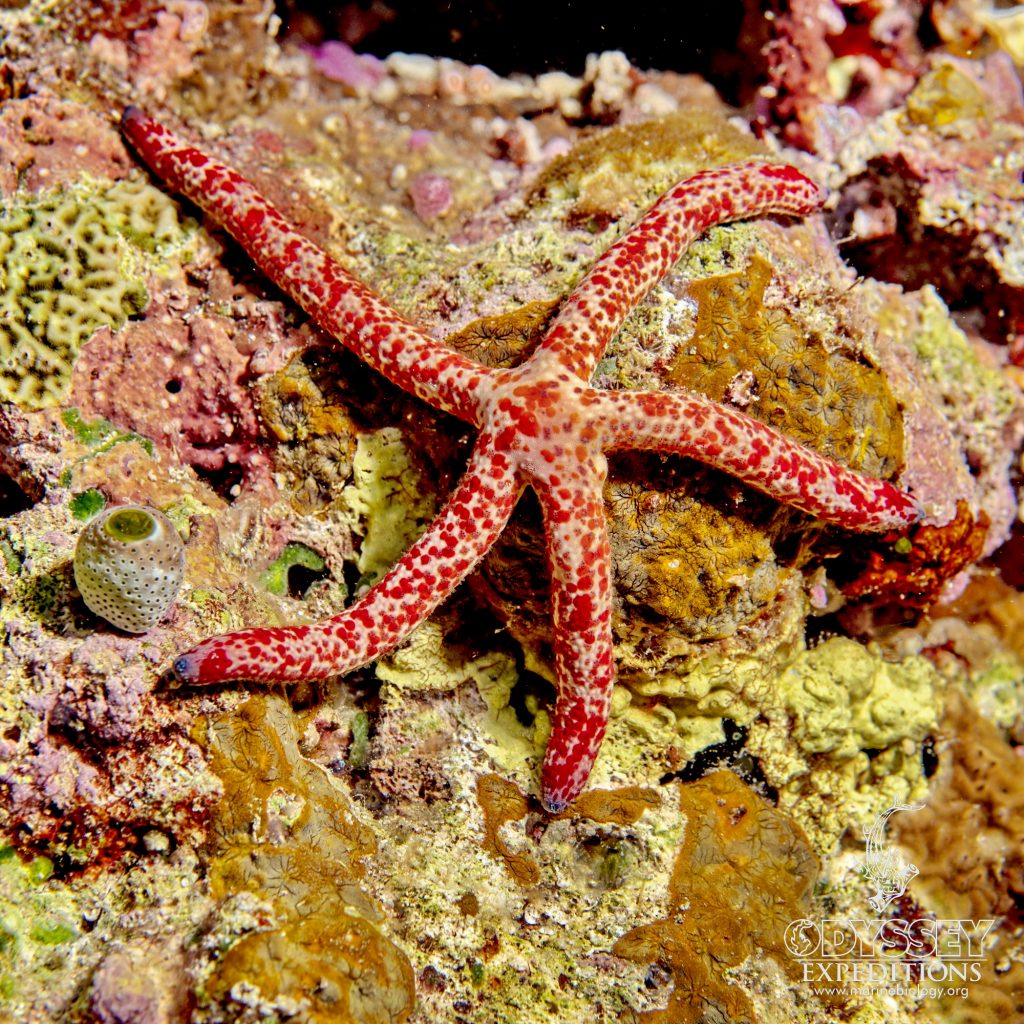
Multipore Sea Star – Linckia muitifora
Interestingly the Multipore exhibits autotomy (self amputation) and often sheds one or more arms. In this process, the arms become detached at various positions and each can grow into a new individual. This happens with such frequency that it is considered to be a means of asexual reproduction. Few individuals are found that do not exhibit some evidence of prior autotomy. Individuals always lose their largest arm to autotomy. From the “tail” of the comet, the arm that was dropped off, 4 arms are slowly growing back to form a new complete sea star. As the process continues, the little arms grow bigger, and they will eventually end up looking like stars again. It appears that most of the populations can be made up of these comet individuals. The sexual (gonochoric) produced embryos hatch into planktonic larvae spending up to two years in this stage before settleing and metamorphose into pentamorous juveniles which develop into young sea stars with stubby arms.
In a study on Hawaii, it was found that the detachment of an arm is not caused by a sudden snap. Most fractures take place about 1 inch from the disk. A small crack appears on the lower surface which spreads to adjacent parts, then the tube feet on the arm and the body pull the two parts of the animal in opposite directions. The event may take about one hour to complete. The damaged tissues take about 10 days to heal and the animal grows a new arm over the course of several months. The detached arm is known as a “comet” and moves about independently. It takes about 10 months to regenerate a new disk with arms 0.5 inch in length.
Sea stars can probably undergo asexual reproduction more easily than other animals because they have most of their organs repeated in each of their arms. Also, they don’t have a centralized nervous system, it would probably be a trickier thing to do if they also had to regenerate a full brain. Because of the position of their mouth, it is also one of the first thing to be regrown, so they don’t have to starve for too long before they can feed again. If many species of sea stars can regrow a missing arm, only a few can, like Linckia multifora, regrow a full animal from just an arm.
Etymology
Linclda – The genus is named after the German naturalist Johann Heinrich Linck
muitifora – multi– ‘much or many’ and +fora = ‘forum’?
Halley’s Comet is arguably the most famous comet. It is a “periodic” comet and returns to Earth’s vicinity about every 75 years, making it possible for a human to see it twice in his or her lifetime. The last time it was here was in 1986, and it is projected to return in 2061.